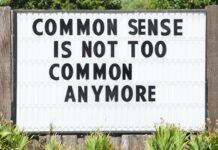Last December I suggested that conservatives hold off uncorking the champagne when the Supreme Court agreed to hear oral arguments on its first major gun rights case since it decided District of Columbia v. Heller in 2008 and McDonald v. Chicago two years later. On Monday, my cautionary note proved prescient. The High Court once again sidestepped providing jurisprudential support for the fundamental right to possess a firearm.
In what has become a recurring theme for conservatives looking to Chief Justice John Roberts for a degree of constitutional backbone in protecting individual liberty against government overreach, he sided with the more liberal members of the Court in not taking a position.
The case before the Court (New York State Rifle & Pistol Association Inc. v. City of New York, New York) involved a New York City ordinance that prohibited even the few New Yorkers permitted by the Big Apple’s police department to have a gun in their home, from transporting it to any location outside the city’s limits, even if necessary to practice at a lawful gun range.
In taking this case for consideration, the Court appeared ready at long last to put some teeth into its 2008 and 2010 majority decisions (which included Chief Justice Roberts), that declared the right to possess a firearm as guaranteed by the Second Amendment, to be an individual right rather than a collective right as favored by the more liberal justices and by gun control advocates like former New York City Mayor Mike Bloomberg.
New York City officials were not asleep at the switch, however, and once the High Court agreed to take the case for decision, they cleverly rescinded the gun-transportation ordinance; notwithstanding their earlier argument that it was “essential” for protecting the public. Their gambit appears to have worked.
On Monday, a majority of Supreme Court justices, including neophyte Associate Justice Kavanaugh and Chief Justice Roberts, sided with the Court’s liberal bloc in a 6-3 decision declaring the case to be moot; thereby sidestepping the underlying and important questions about the law’s constitutionality. Protecting Americans’ right to possess a firearm free of prohibitory restrictions imposed by local government, once again has been brushed aside for another day.
There is, perhaps, at least a bit of a silver lining in this latest dark cloud hanging over gun rights in America.
The dissent, authored by Justice Alito and joined by fellow Associate Justices Thomas and Gorsuch, clearly and forcefully laid out the reasons why the New York City law was abhorrent to the Second Amendment’s fundamental purpose. These justices also argued that the case was anything but “moot.”
Hopefully, this dissenting narrative will provide legal ammunition for federal and state court judges, who far too often defer to state and local governments that have enacted regulatory barriers severely limiting individuals’ ability to exercise their Second Amendment rights.
Noteworthy also is the position taken by Justice Kavanaugh in his concurring opinion. In it, the newest member of the High Court said the Court has a responsibility to address these important gun rights issues, and that it should consider doing so “in one of the several Second Amendment cases . . . now pending before the Court.”
There are in fact a number of cases as described by Kavanaugh awaiting decision by the Court whether to grant review; including some that present even clearer evidence of government overreach than did the New York City case did.
We can only hope that the messages delivered in Monday’s opinions by Justices Alito, Thomas, Gorsuch and Kavanaugh will be heard — and heeded — by Chief Justice Roberts.






























